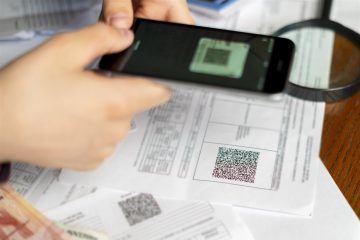An invoice correction note is a document that allows you to correct minor errors on a sales invoice without having to issue a correction invoice. When can it be used and who is authorized to do so? Read this article to learn the rules and avoid errors that may have tax consequences.
What is an invoice correction note?
An invoice correction note is a document that allows you to correct errors that do not affect the numerical values appearing on the invoice. Unlike a credit note, which is issued by a seller, a credit note can be prepared by the buyer of the goods or services. Using a credit note is especially useful when there are formal errors or incorrectly entered data on the invoice, such as a VAT number, a customer's address, or a misspelling in the name.
It is worth remembering that a correction note is not used to change amounts – in such cases, a correction invoice should be used. The rules for issuing a note are regulated, among others, by Article 106k of the VAT Act. This document must be approved by the invoice issuer and is intended to ensure consistency with accounting records.
It's worth knowing that with the full implementation of KSeF, the correction note will no longer be used as a tool for correcting errors on invoices. The KSeF e-invoicing system allows for the issuance of correction invoices – these will replace existing notes. If you need to make a correction to a previously sent invoice, use the correction invoice generation operation. Details on this process can be found in KSeF API documentation, which describes how the function that allows issuing a correction in the KSeF system works.
Who can issue a correction note?
Only the purchaser of the goods or services, i.e. the invoice recipient, may be the issuer of a correction note to an invoice. This is an important difference from a credit note, which is the seller's responsibility. Therefore, if you receive a document with formal errors, you don't need to contact the seller to request a correction – you can prepare the note yourself, as long as the error doesn't concern the invoice value.
However, not every type of error qualifies for correction by the buyer. In practice, a correction note can only be issued when:
- the error is in the formal data of the invoice;
- these data do not affect tax calculations;
- the seller accepts the content of the note.
It is important that the note contains a clear reference to the original invoice – it must include its number, date of issue and details of the parties to the transaction. Although there is no official template for a correction note, it is worth using ready-made templates or accounting programs that generate documents compliant with applicable regulations.
Wondering who issues a correction note in accounting automation? Software compliant with the KSeF requirements can help ensure the correct generation of such documents. In such cases, it's crucial that the data is consistent and compliant with the original invoice, and that each correction is legally documented.
In what situations is a correction note used?
A corrective note to an invoice is only applicable in cases where the document contains formal errors that do not affect the numerical values. Examples include typos in the company name, an incorrect Tax Identification Number (NIP), or an incorrect customer address. In such situations, the invoice buyer, not the issuer, has the right to make corrections via a properly prepared note. This solution significantly simplifies the operations of many companies, especially those that process hundreds of documents each month.
Using a credit note is convenient because it doesn't require the seller to generate a new invoice. However, it can't be used in every situation. If the error concerns the tax amount, unit price, VAT rate, or quantity of the goods, then a credit note is necessary. The correction note is therefore a complementary tool and not a replacement for the correction invoice.
In practice, minor errors often occur that don't impact tax liabilities, yet must be corrected to maintain compliance. This raises the question of who issues the correction note, and the answer is simple: the buyer. A well-prepared note and the seller's confirmed acceptance allow for a quick and legal resolution of such a matter.
How to properly prepare a correction note?
Preparing a correction note requires precision and compliance with applicable regulations. a document that must clearly indicate which invoice it refers to – by means of the invoice number, the date of its issue and the details of the parties to the transaction. It's also crucial to identify any information that was incorrectly provided and its correct equivalent. Any formal error, no matter how minor, should be corrected clearly and unequivocally.
There's no official template for an invoice correction note, so its format may vary depending on the accounting tool or software used. However, it must include basic elements, such as buyer and seller details and a description of the correction. It is also good practice to attach the signature of the person issuing the document and obtain confirmation of acceptance from the other party – in the paper version, usually handwritten, and in the electronic version, e.g. via e-mail.
An incorrectly prepared note may require the document to be reissued and, in some cases, may expose the company to questioning the accuracy of its documentation. Therefore, it's important to ensure that every element of the note matches the invoice it relates to. This is especially important for those using accounting automation systems, where any errors can quickly multiply and impact a wider range of settlements.
What are the consequences of invoice errors?
While an invoice correction note is helpful in the event of minor errors, it's important to be aware that some errors—even seemingly minor ones—can lead to serious consequences. Incorrect data in accounting documents can lead to VAT settlement issues, sales or purchase accounting errors, and even difficulties during tax audits. That's why it's so important that corrections are made correctly and without unnecessary delay.
Failure to ensure correction may result in:
- questioning the right to deduct VAT by the purchaser;
- financial penalties for irregularities in documentation;
- the need to submit explanations to the tax office;
- delays in settlements with contractors;
- loss of the company's credibility as a reliable business partner.
To avoid such situations, each correction note should be issued in accordance with regulations and accepted by the other party. The importance of correct formal data should not be underestimated – even a minor discrepancy can become a flashpoint in the event of an audit or dispute.
Attention to detail, awareness of responsibilities and knowledge of who issues the correction note help minimize the risk of errors and their consequences in the daily functioning of the company.


